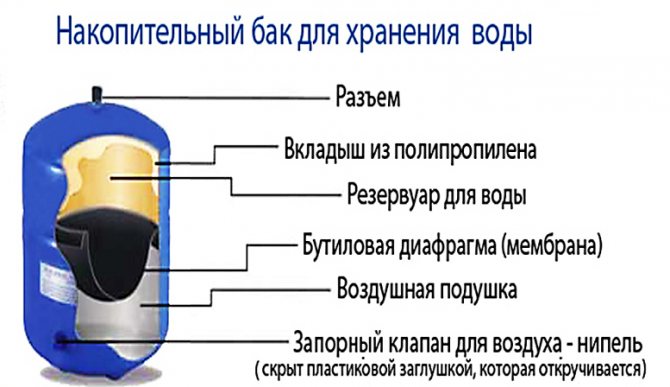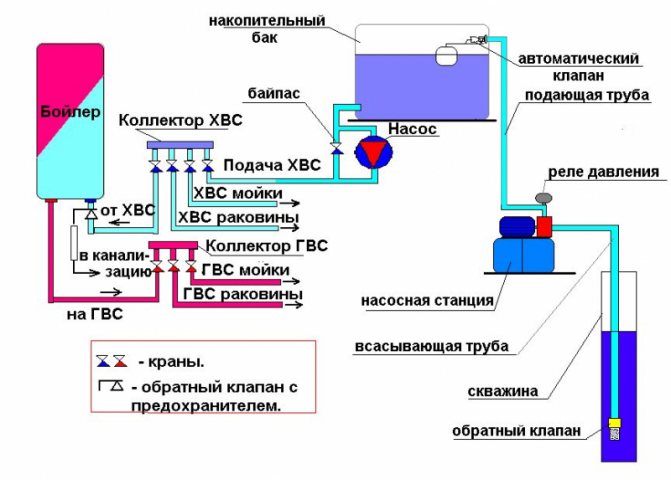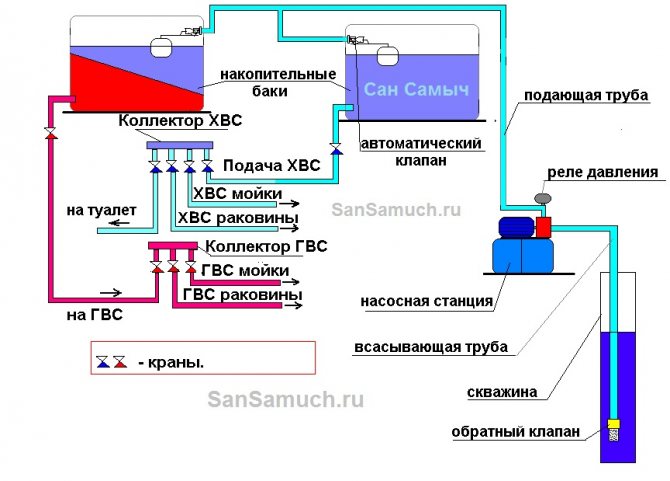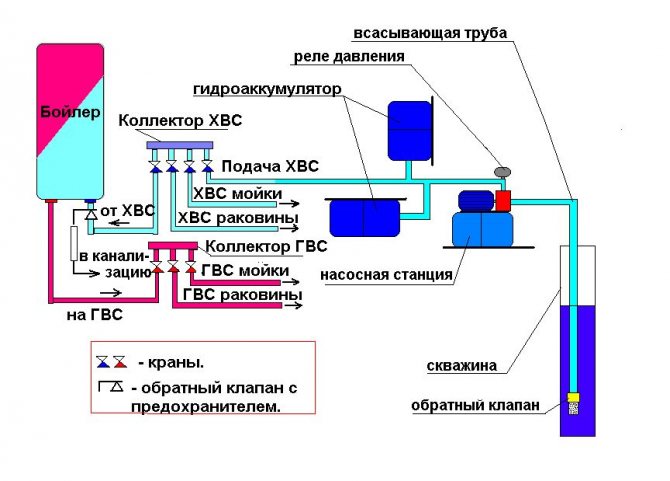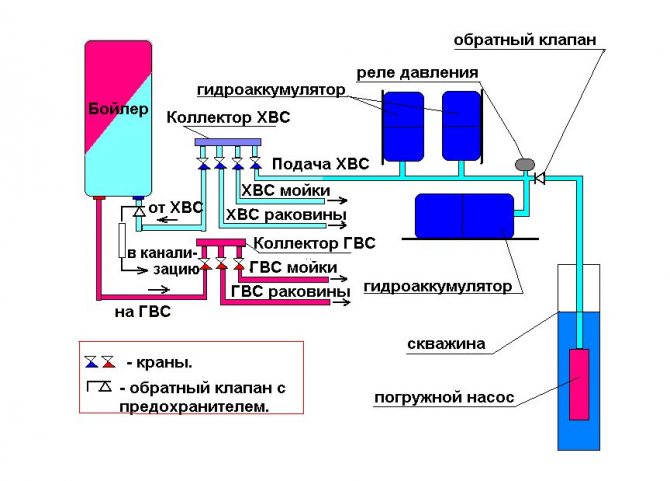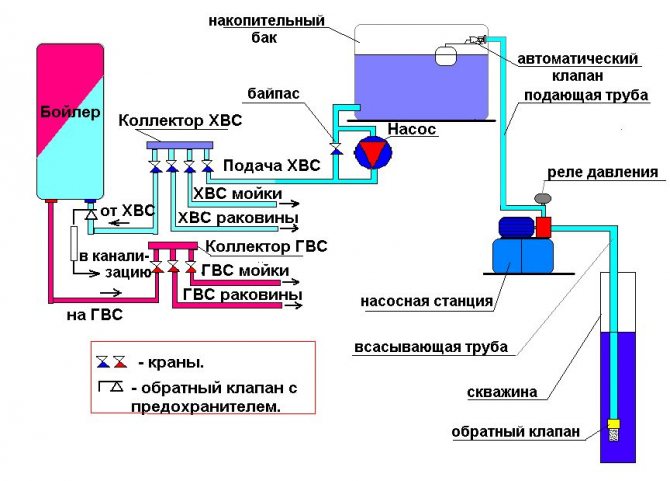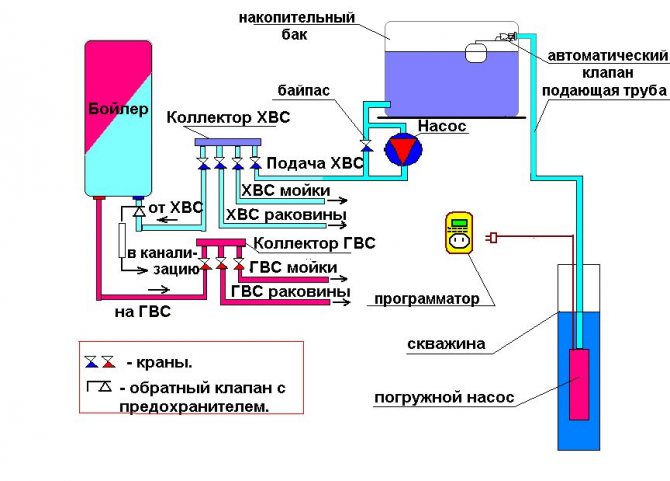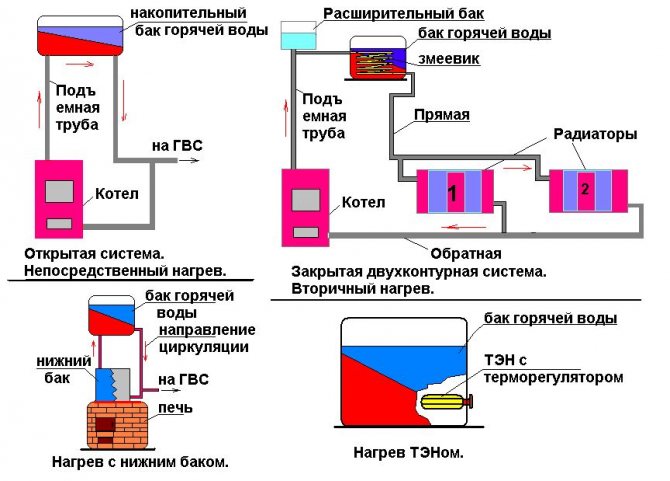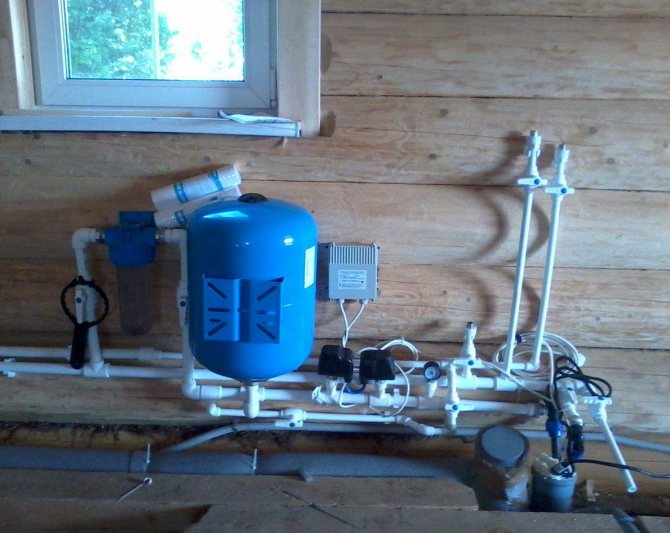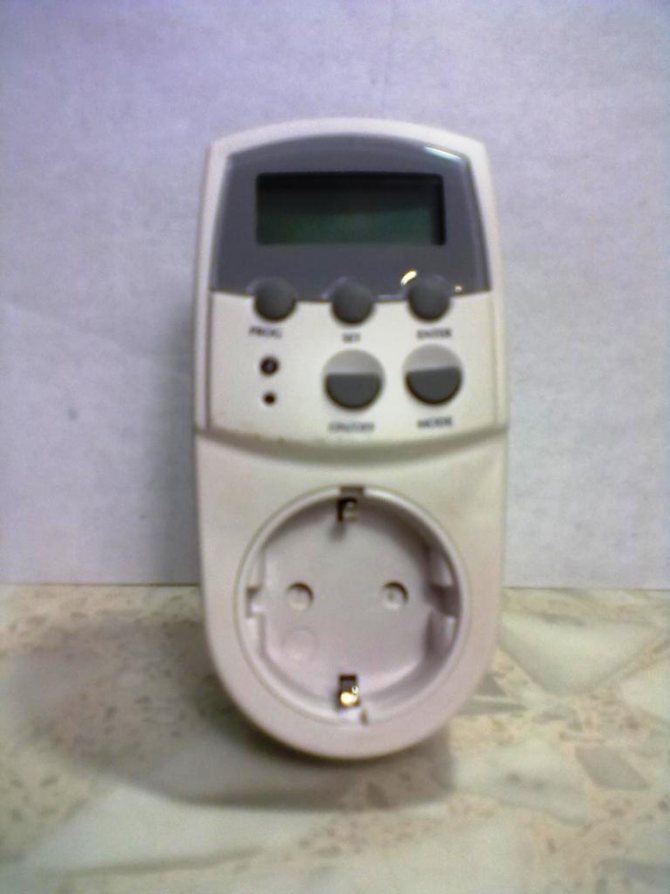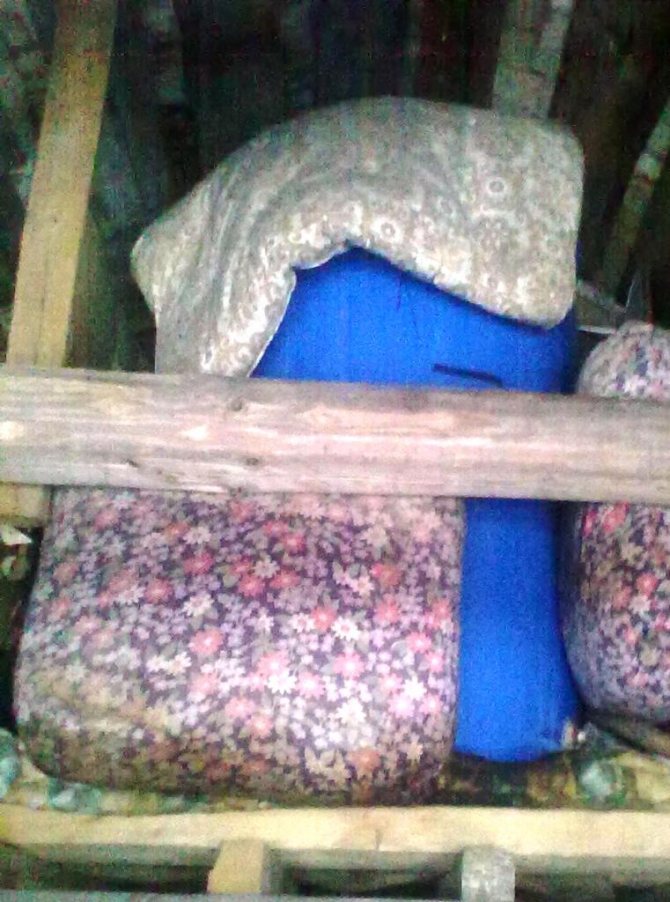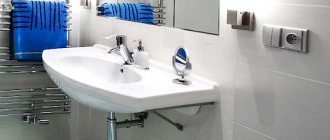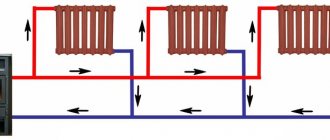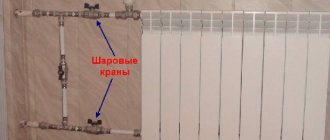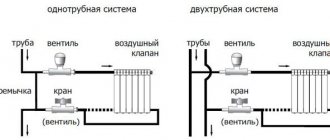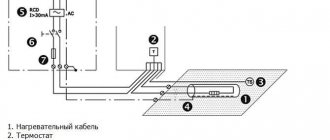Water supply schemes with a storage tank
If, for example, the water supply system of a private house with a storage tank is such that the natural flow of water into the well or well is small, then it is necessary to provide a certain supply of water in case its consumption suddenly increases. During the day, water usually accumulates in such a tank, and in the evening rush hour it is intensively consumed when every family member wants to wash. Sometimes water is supplied to a residential building at certain hours. In this case, the storage tank for water supply will help to collect the required amount of water so that it can be used at any time and without interruption.
Installation and maintenance of drives
The tank can be installed independently, since there are no special difficulties in this work, the easiest way is to work with a plastic tank.
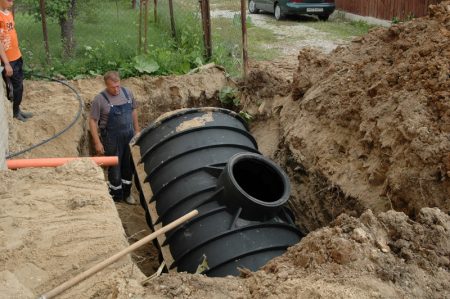
Choosing a location for the drive
It is very important to choose the right place where the drive will be installed. When choosing, you should take into account the following points:
- The place for installation is chosen taking into account that it is located below the house. This is necessary in order to lay pipes with a slope.
- You can't put the drive too close to home, but excessive removal is also undesirable. In the first case, an unpleasant smell may appear near the house, and in the second, you will have to build too long a pipeline.
Advice! The optimal distance between the house and the storage location is 5-6 meters. If the route is too long (longer than 15 meters), it is necessary to provide for the installation of revision wells.
- The best option would be one in which the sewer pipeline is straight. If it is necessary to organize the turn of the pipes, a rotary well is installed in this place.
- When choosing a place, you need to remember that the drive must be located so that a sewer truck can drive up to it.
Installing the Drive
Installation takes place in the following order:
- A pit is dug, which should be 40 cm wider than the storage tank.
- The depth of the pit should be such that the liquid in the tank does not freeze.
- At the bottom of the pit, a "shock-absorbing cushion" is arranged, that is, sand is poured in a twenty-centimeter layer. This pillow will protect the container from destruction during the period of seasonal ground movements.
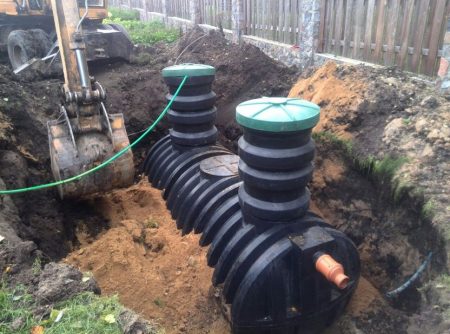

- The tank is installed in place, a sewer pipe is connected to it, through which drains will flow.
- On the sides of the container, sand is added, and every 15 cm of height a layer of sand is compacted.
- If the drive is located too deep, then special necks are used for the construction of the well. The well hatch is closed with a lid.
- From above, the container is covered with a layer of sand, and then with soil.
Drive maintenance
Maintenance consists in the timely cleaning of the tank from accumulated effluents. To make it easier to control the volume of wastewater, the container is sometimes equipped with special sensors that give a signal when the liquid level reaches a certain level.
So, a storage tank is a simple and cheap way to organize an autonomous sewage system. However, the operation of the storage devices requires additional costs, since you have to regularly use the services of sewers, which, of course, are not free.
Storage tank volume
The volume of the storage tank directly depends on the number of people living:
- Per person, a volume of water not exceeding 200 liters is considered sufficient for everyday household and economic needs.
- For country water supply, which does not provide for some items of water consumption, for example, washing, to calculate the volume of the tank, one should proceed from the norm of not more than 80 liters per day per person, or even less. For a family of 2-3 people, a storage tank for water supply of a dacha of 200 liters is quite suitable.
- If water is used only for food, drinking and washing dishes, as well as morning and evening washing, then even 30 liters per person may well be enough.
Water supply scheme of a private house with a storage tank:
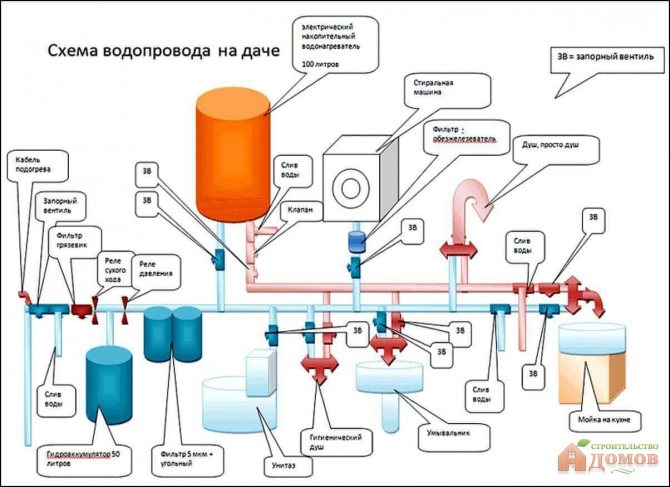

Selecting the volume of the container
When choosing a storage tank for sewerage for a house with permanent residence, it is recommended to proceed from the calculation that it was necessary to pump it out once every 2-4 weeks. In addition, when selecting, one should take into account the possibilities of sewage disposal equipment.
There are machines on the market with various tank volumes. The most common technique is in which a tank holds 3, 10 or 16 cubic meters of liquid. Since you have to pay for each call to the car, the best option would be if the technician can completely pump out the tank in one trip. Therefore, it is worth checking with the company that will maintain the sewage sump, what equipment is available in their fleet.
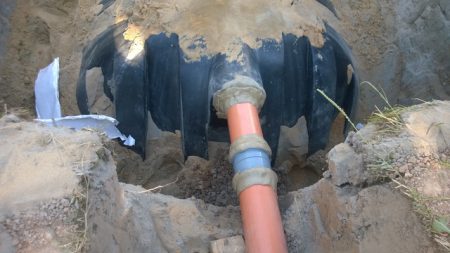

If you choose a storage tank for sewerage in a country house equipped with a minimum amount of plumbing, then the best option would be a tank volume that allows pumping out 1-2 times per season.
Advice! To service a house inhabited by 4-5 residents, it is recommended to choose a drive with a volume of 10 to 12 cubic meters. Of course, this is only an approximate recommendation, as water consumption may vary from family to family. So, in a country house equipped with one toilet, shower and sink, there will be much less drains compared to a cottage with several bathrooms, bathrooms, a washing machine and a dishwasher.
Storage tank installation methods
The storage tank can be installed underground, openly and inside the house. With the open method, the tank is installed on a hill, due to which it will function as a water tower and make it unnecessary to use the pump.
Only a small container is installed inside the house, which does not require much space.
An arbitrarily large tank can be hidden underground, and above it, for example, garden beds can be placed. But for an underground installation, additional work will be required.
In addition, the container must have a certain configuration. The plastic tank should be round or ribbed, with technological holes for inspection and cleaning. If a "eurocube" is used, then a concrete shell will be required for it, since the mesh fence will not save from soil pressure.
Water supply scheme with a storage tank:
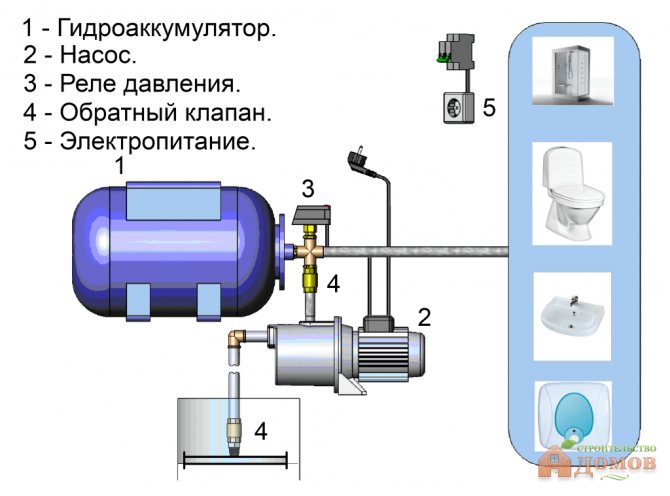

Materials for the manufacture of storage tanks
Tanks for collecting sewage can be made of concrete, plastic or metal. Consider what are the performance characteristics of these options.
Concrete tanks
This option is used extremely rarely today. Firstly, a concrete container installed in the ground lasts for a relatively short time, since concrete is destroyed by moisture. Secondly, the device of such a drive is not easy, it will require serious labor costs.
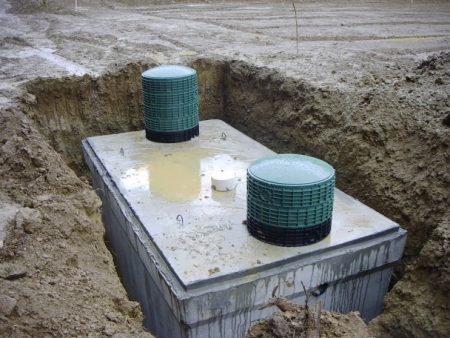

Metal drives
Metal containers designed to collect sewage are used more often than concrete ones. However, this option is not very reliable either. After all, the metal is susceptible to corrosion, so it quickly collapses under the influence of water and other aggressive substances.
If you use stainless steel containers, then the sewage system will require significant costs, which can hardly be called rational, since there are no less reliable, but cheaper options.
Advice! When planning to install a metal storage tank for accumulating wastewater, care should be taken that the metal is covered with a protective compound (outside and inside), and all joints and seams must be filled with sealant, which will prevent the penetration of dirty water into the ground.
Plastic drives
Plastic containers are the best choice for a storage device. This solution has many advantages:
- Plastic is not subject to corrosion, so it does not deteriorate under the influence of aggressive media.
- Plastic is a light material, so it will be easy to install a container (even if it is large), even without the use of special equipment.
- Plastic containers have no seams, so they are completely sealed. The joints with the sewer pipe are treated with a sealant.
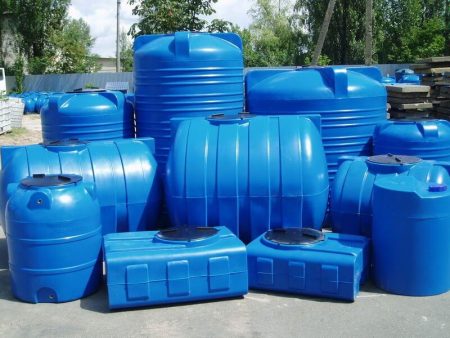

Plastic storage tanks have the only drawback - due to their low weight, they can float during the spring flood. To protect the sewer network from destruction caused by the ascent of the storage tank, it is necessary to lay a reinforced concrete slab at the bottom of the pit, to which the container is fastened with the help of bandage belts.
When installing plastic tanks in difficult soils, sometimes it is necessary to build a sealed concrete "sarcophagus", which significantly increases the duration and cost of work.
Tank automation and cleaning
These aspects must be taken into account even when installing the container. If water is supplied with a normal pressure and a certain frequency, then the issue can be solved quite simply by installing a float valve for the toilet on the supply connection. When filling the container, it will cut off the supply, and the water will not overflow.
If water is taken from a shallow well or a poorly filled well, then to supply it, you need to use a drainage pump equipped with a float switch. When the water level in the well drops to a critical one, the pump will automatically turn off.
If the storage tank for water supply gives water through the pump, then a float or other switch inside the tank itself is required. When the water level drops to a minimum, the pump will turn off. You can duplicate it with a water level, which is useful when using a washing machine, to make sure that it has enough water to wash it.
How to choose
First of all, pay attention to:
- tank material,
- the amount of capacity,
- product shape,
- then, for what purpose the container was useful to you, and what kind of liquid you need to collect - drinking or rain.
These are the main parameters that need to be taken into account.
In addition, you need to find out:
- how well the lid fits to the tank,
- does the tank have drainage taps,
- how exactly to fill it,
- are there any flaws on it.
The shape of the tank will also affect the ability to install the product. For example, a rectangular one does not take up much space, but its price is higher than a rounded one with the same internal volume.
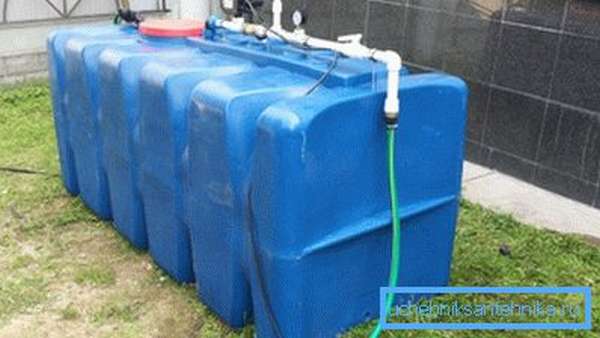

Appointment
The main types of storage tanks:
| For storing drinking water |
Quite often, this type of container is called universal. |
| For rainwater |
|
| Emergency | It is used when other irrigation systems are not working.In the event of breakdowns or repairs, work on the site may take. |
Choosing a capacity
The water tank is indispensable in cases when the water utility stops supplying water for a while. Based on this, it is necessary to decide in advance how much you need to solve problems at this time.
For example, the instruction recommends for:
- drinking, cooking is enough - 100-500 dm3,
- irrigation - 1000 dm3 - 5000 dm3.
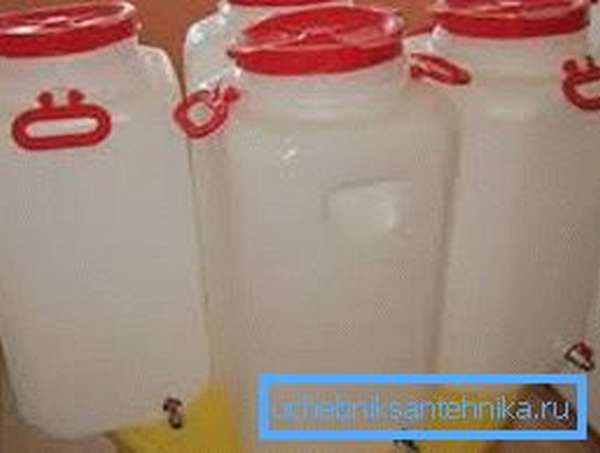

The capacities presented in the retail network are calculated for different quantities.
There are series models:
- "T" - is considered universal and the largest, the volume of tanks reaches - 10? M3. The model is durable, quite often used as a storage septic tank.
- "L" - calculated for the amount of 750 dm3 and 1,000 dm3, it is possible to store industrial water, drinking and food products in them. Seamless vertical casing for easy installation in small spaces.
- "S" - used for storing water, technical liquids and products. Quantity 500 - 2,000 dm3.
The handicap and body of containers of various series are calculated so that they can pass through the doorway.
Advice: for a summer cottage, the "EVL" series is considered the optimal storage capacity for water, since it is frost-resistant.
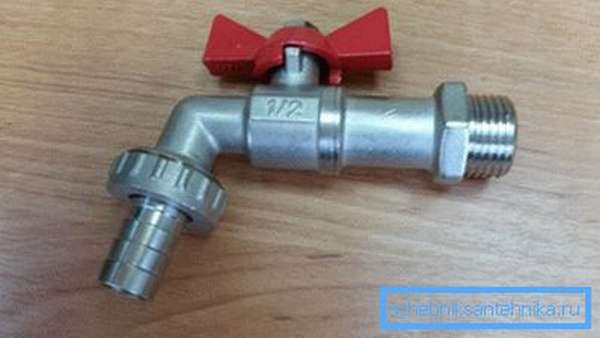

Tank material
When receiving a container for water, you need to pay attention to the material that was used to make it. We recommend proceeding from your own requirements and wishes.
Let's take a closer look:
- Stainless steel - use tanks for storing technical and drinking water. They are made in round and rectangular shapes. The price of such tanks is high.
- Plastic - another not very inexpensive option. Quite comparatively not so long ago, they were practically equal in price to "stainless steel", but technology allowed steam to reduce the price of production. Industrial and drinking water is stored in such containers, produced in various colors. It will be very simple to install a crane in them with your own hands.
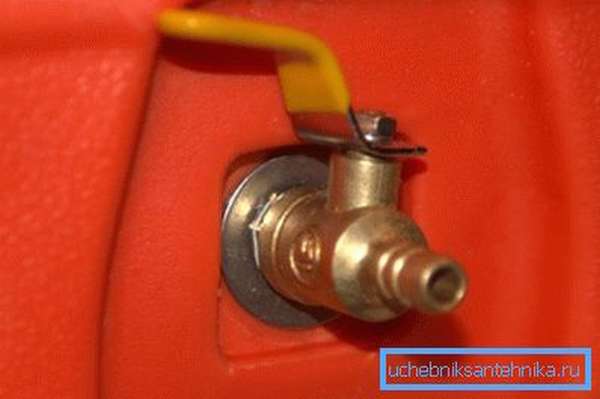

- Metal - have proven themselves well for storage, heating and cooling of water. In practice, the tanks are not inferior to their stainless counterparts, but they are much cheaper. It is possible to buy them in the retail network or to order, additionally equipping them with valves and temperature sensors.
Advice: it does not matter what the tank is made of, the main thing is to know what exactly it is being purchased for, which, on its part, will help to deal with the material of the container.
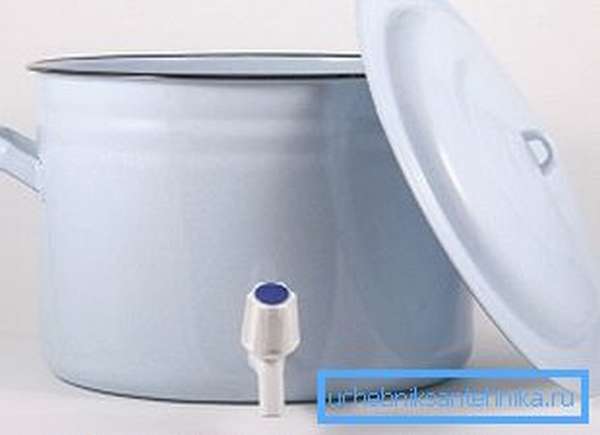

Where and how to install the water tank
The correct location of the water tank immediately solves a lot of troubles. If initially the place was chosen incorrectly, the normal operation of the product will be very difficult.
Based on this, we recommend that you take your time, but take everything into account in advance.
- There are two options in an apartment or house:
- at the highest point, so that it is possible to apply the gravity of the liquid, and in certain cases, for example, for a shower stall, an electric pump,
- in the kitchen under the sink - in this case, water can enter the taps only under the forced pressure of the pump. In this case, if the electricity to the home is cut off, the water supply will end.
Tip: We recommend that you equip the tank with a tap at the lowest point for draining water in an emergency.
If you decide to install the tank in a cold attic, do not forget to insulate well not only it, but also the outgoing water pipes, and especially the faucet.
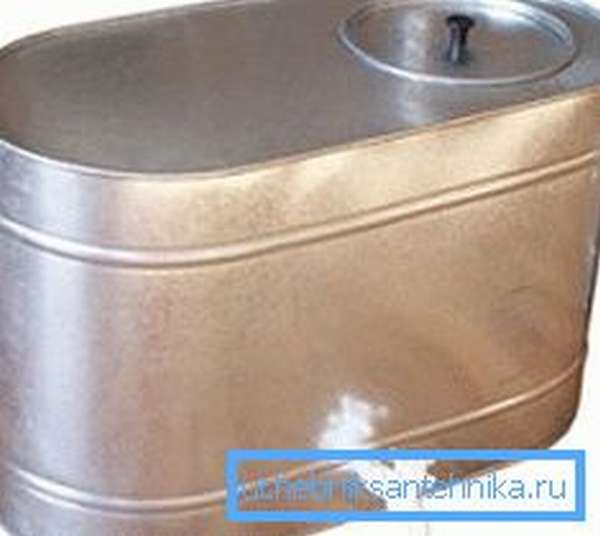

- In this area, the installation of the tank is likely above and below the ground. Based on this, go straight to choose tanks - ground, underground (place them as close to the water supply as possible) or suspended. From time to time it is possible to install tanks on special towers or platforms.
By following these simple rules for choosing water tanks, you need not worry that you will not be able to prepare food and the plants will not be properly watered. When taking a container, do not forget to select the right tap with all the accessories for it in advance.
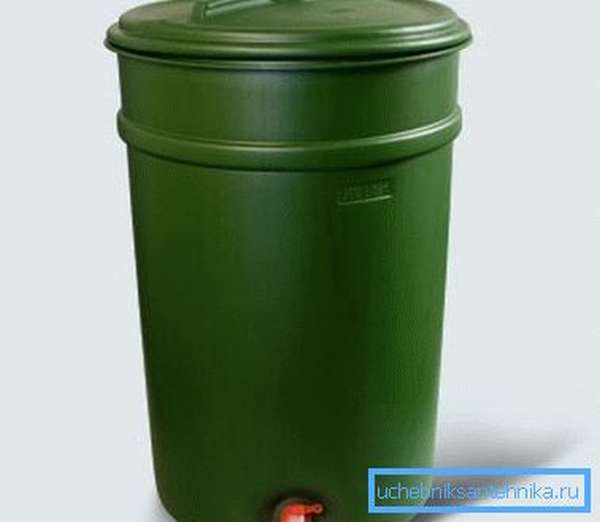

The nuances of installing a storage tank
To prevent the storage tank from becoming dirty longer, a water filter must be installed at its inlet. Usually it is mesh, but for large containers (more than a cubic meter) and with contaminated water, it is better to replace a rapidly clogging mesh with a centrifugal filter pump or a cyclone filter. Despite the high cost, water supply with a storage tank and a pump will be more economical to operate.
In the tank installed on the podium, you need to make a drainage hole through which the sludge will drain during flushing.
In the case of an underground arrangement, the tank is cleaned through the revision hatch, from where dirt is removed from the bottom with a bucket. It is best to use a flat-bottom container with a slight slope for this, in which sludge will accumulate just under the inspection hatch, and it will be easier to remove it.
So that the mud does not rise from the bottom of the tank when water is supplied, the inlet pipe can be completed with a garden or shower head, or a mesh filter located inside the house can be installed on the outlet pipe for ease of maintenance and cleaning at any time.
Have you installed a storage tank as an addition to the water supply system? Or do you think this is an unnecessary detail? Share your opinion in the comments.
Calculation of the volumes of the cleaning tank
Before installing the drive, its required volume must be calculated. All settlement activities are aimed at determining:
- Dimensions of the case.
- The volume of wastewater per day, which is able to accommodate and cleanse the storage sectors.
- The volume of water per person in the house per day.
- The number of people living in the house.
- The amount of building materials for self-assembly.
- Your personal financial capabilities.
Evaluation of the dimensions of the cleaning tank body is carried out according to three main standard parameters (length, width, height)... In addition to this, the dimensions of all pipes, manholes and adjacent structures are taken into account to prevent errors during further installation.
Correct determination of the dimensions of the storage-type cleaner is mandatory in order to determine the dimensions of the pit for its placement. It is also important to know them to assess the capacity of the device in the free area available on the site.
To determine the volumetric capacity, it is enough to estimate the dimensions of its individual body or individual sectors and enter them into a specialized calculation formula.
The volume of water intended for use by one person is best calculated according to standard tables. They indicate the average values of volumes in liters per day.
For example, for residential buildings with a sewerage system and without bathrooms, consumption is normally 125-160 liters; for residential buildings with internal water supply, sewerage system, baths and local heating generators - 160-230 liters; for residential buildings with sewerage, bathtubs and centralized heating system - 230-350 liters.
Establishing the number of people living in a country house plays a very important role for the correct choice of the volume of a septic tank, since the resulting number is multiplied by the average values of water consumed by one person, which is an indicator of the required volume of the storage tank.
Among the building materials involved in the installation of the cleaning accumulator, not only the plastic container itself is distinguished, but also concrete for the formation of the foundation, cement, sand, crushed stone. Thus, the entire cost is considered to fully provide the construction with the initial funds.
The approximate amount of each type of material is listed in the federal regulations that are freely available to each homeowner.
To carry out the installation of a plastic cleaning accumulator, the following types of materials and tools will be required:
- Septic tanks themselves storage tanks purchased in ready-made cases in a store, or produced independently using barrels, tanks, plastic rings.
- Pipes for sewage drains made of plastic with a diameter of about 10-11 cm with attached couplings.
- Transition right angle corner bending.
- 45 degree adapters.
- Crushed stone.
- Building level.
- Perforated pipe to ensure the drainage function of the water.
- A sufficient number of wood pegs.
- Scotchthat conducts water.
- Shovel and rake to work with the ground.
- Building sealant.
- Glue.
- Electric jigsaw.
Cleaning rates
| Types of pollution | Installation input, mg / l | Cleaning efficiency,% |
| Suspended substances | 10000 | 90 |
| Petroleum products | 5000 | 96 |
| Fats | 5000 | 90 |
| COD | 5000 | 60 |
| BODfull | 2500 | 60 |
| Surfactant * | 300 | 60 |
- The SKAT system is manufactured according to TU 4859-002-47154242-2003.
- Expert opinion of Rospotrebnadzor No. 9786 dated December 29, 2011.
- Certificate of Conformity ROSS RU.AB67.H00684 dated 20.07.2010.

